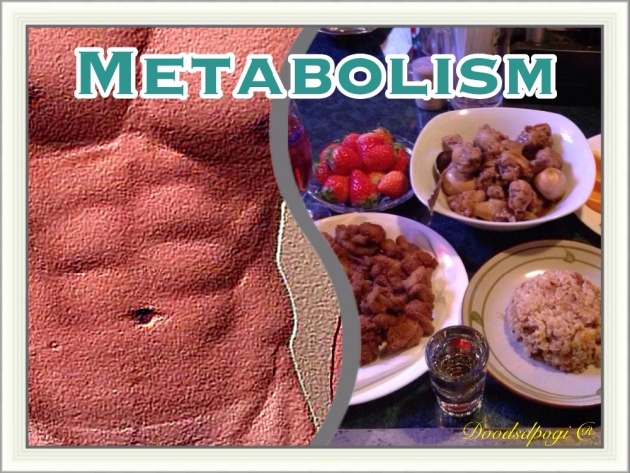
Metabolism
What is Metabolism?
Metabolism is a set through which absorbed nutrients are used by the body for energy and to form and maintain body structures and functions.
There are two (2) main process involved in metabolism, the catabolism and anabolism. Smaller molecular particles from broken-down components of food is done through Catabolism. This process causes the release of energy as heat and chemical energy. While Anabolism on the other hand is the process of synthesis from which substance are formed, like new bone or muscle tissue. The process of both Catabolism and Anabolism happen within cells at the same time.
When nutrients finally reach individual cells, they may be chemically changed through anabolism to help form new cell structures or to create new substance such as hormones and enzymes. Some vitamins and minerals assist in the use of other nutrients within the cell. They act as catalysts or coenzymes to initiate and support the transportation and use of carbohydrates, proteins, and lipids. Other nutrients may be used as energy needed to support deoxyribonucleic acid (DNA) reproduction and create proteins and other molecules, nerve impulses, and muscle contractions. Some energy is stored in a ready-to-use state.
Waste product from metabolism are discarded by the cells and wind up circulating in the blood. They are then excreted through the lungs, kidney or large intestines. The lungs release excess vitamins and minerals but absorb nutrients that the body needs to retain. Waste products may also be discarded through large intestine in feces.
We do not have to consciously control these processes. Our responsibility is to provide an adequate selection of nutrients through the foods we choose to eat and those foods in a way that enhances the function of the GI tract.
Metabolism changes are most noticeable later as the amount of food energy required decreases in relation to lowered metabolic rates. Nutrients needs however, remain constant. Our challenge as we enter the middle years and beyond is to meet nutrient needs to equal actual metabolic use.



